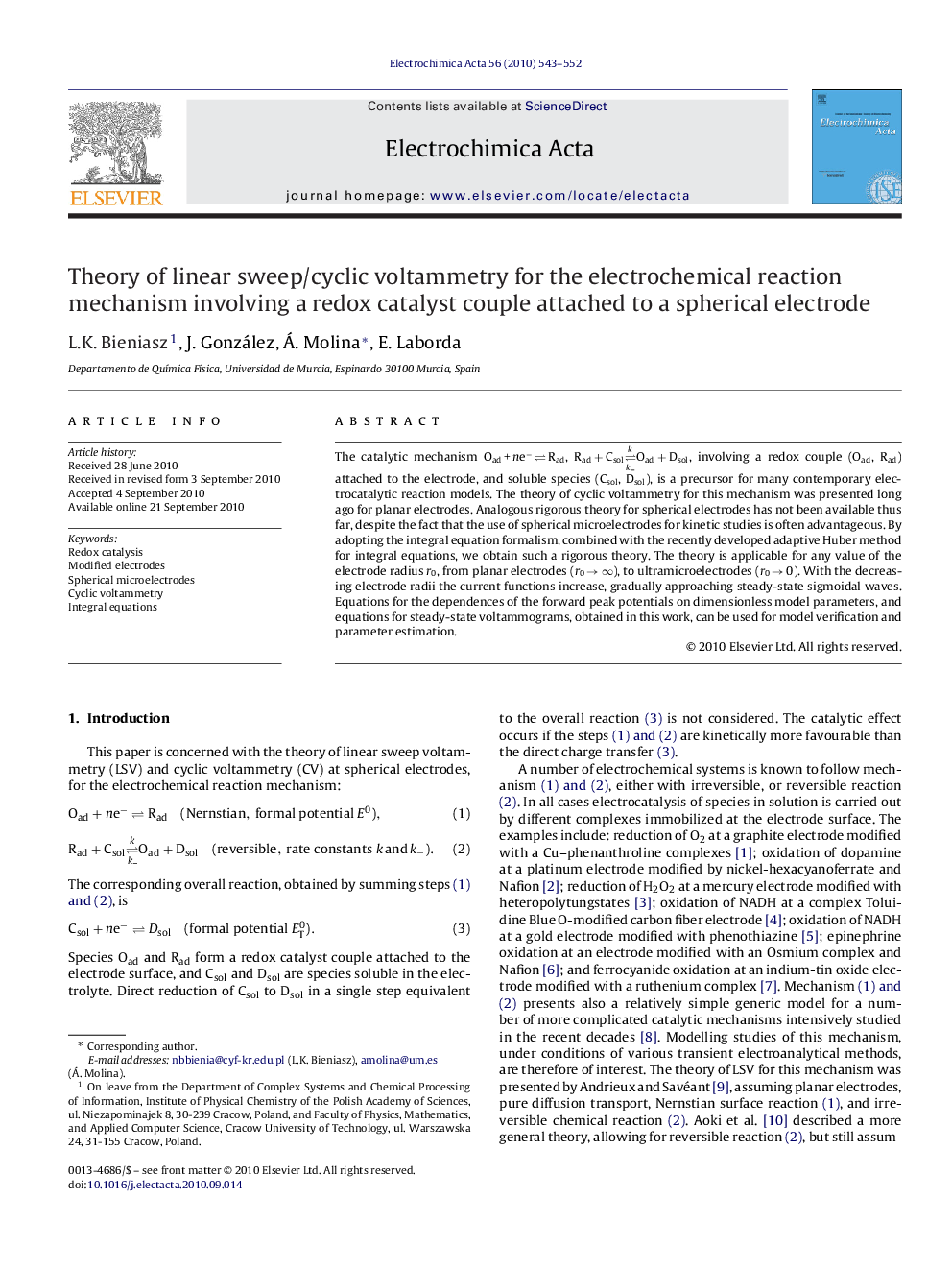| Article ID | Journal | Published Year | Pages | File Type |
|---|---|---|---|---|
| 190538 | Electrochimica Acta | 2010 | 10 Pages |
The catalytic mechanism Oad + ne− ⇌ Rad, Rad+Csol⇌k_kOad+Dsol, involving a redox couple (Oad, Rad) attached to the electrode, and soluble species (Csol, Dsol), is a precursor for many contemporary electrocatalytic reaction models. The theory of cyclic voltammetry for this mechanism was presented long ago for planar electrodes. Analogous rigorous theory for spherical electrodes has not been available thus far, despite the fact that the use of spherical microelectrodes for kinetic studies is often advantageous. By adopting the integral equation formalism, combined with the recently developed adaptive Huber method for integral equations, we obtain such a rigorous theory. The theory is applicable for any value of the electrode radius r0, from planar electrodes (r0 → ∞), to ultramicroelectrodes (r0 → 0). With the decreasing electrode radii the current functions increase, gradually approaching steady-state sigmoidal waves. Equations for the dependences of the forward peak potentials on dimensionless model parameters, and equations for steady-state voltammograms, obtained in this work, can be used for model verification and parameter estimation.
